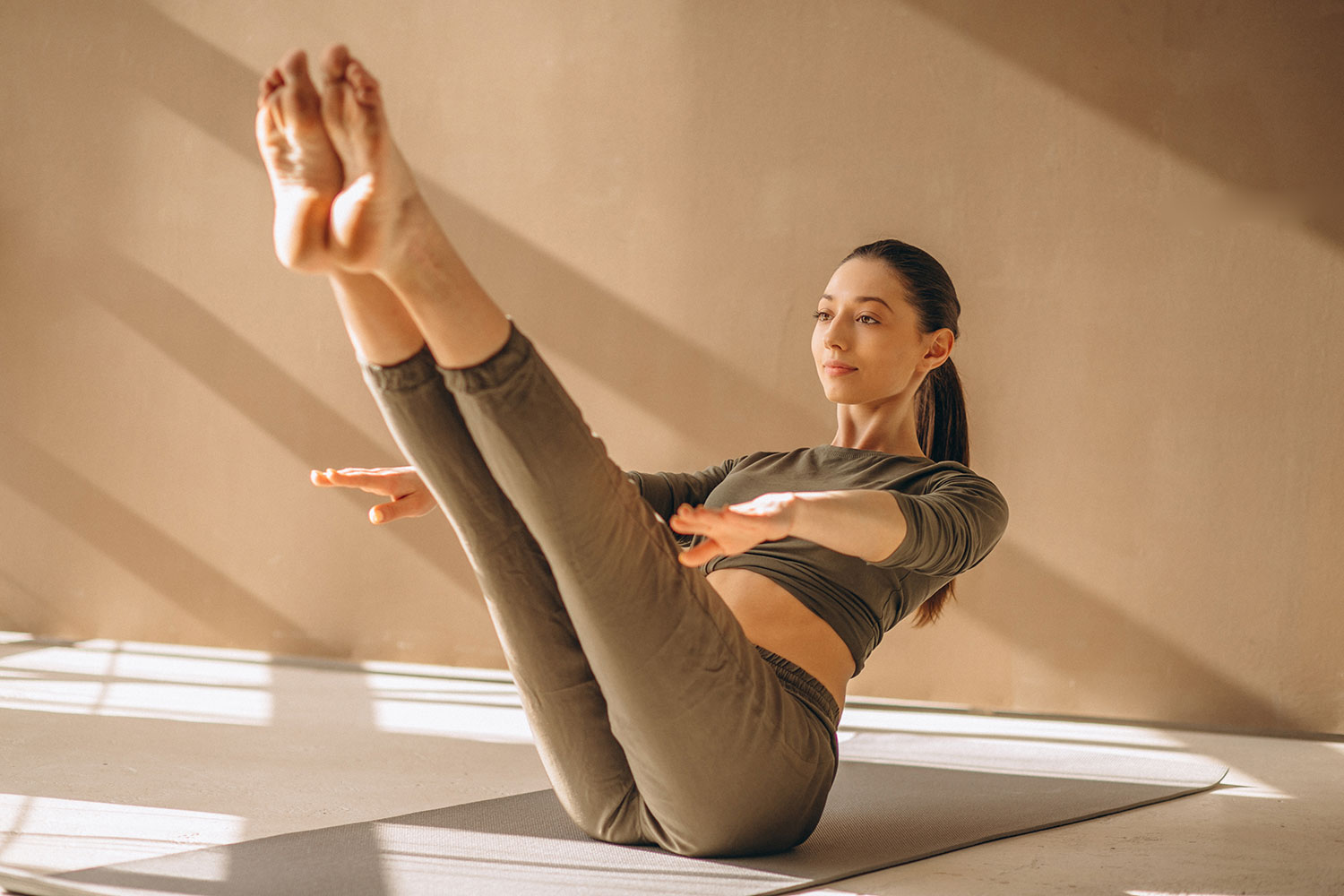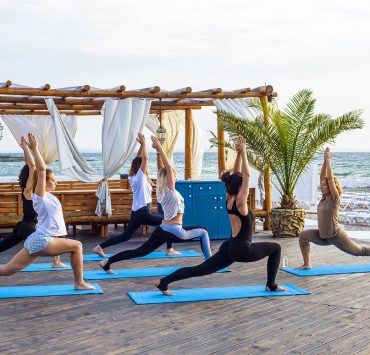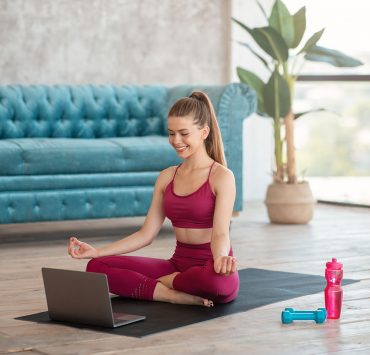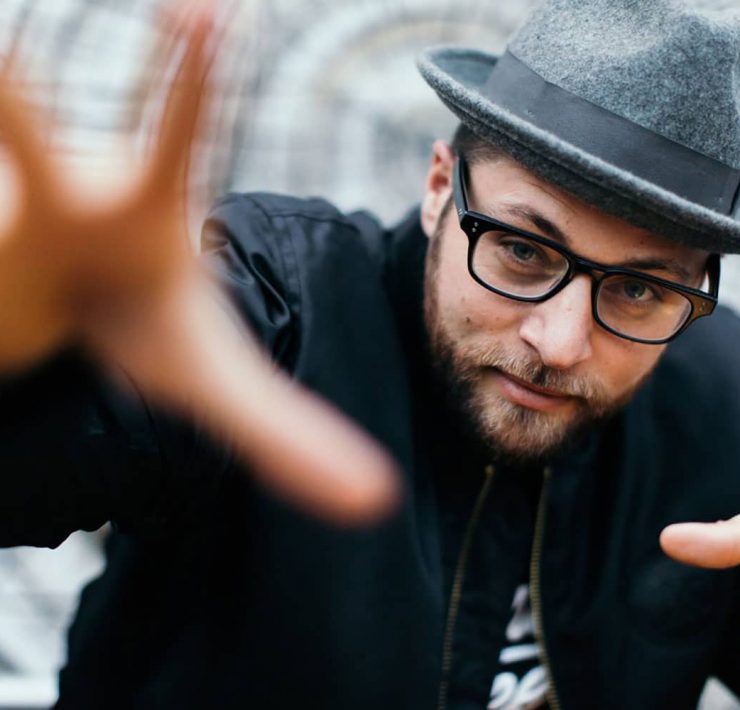
After spending nearly two decades as a relationship therapist, Patricia…
Let’s start at the very beginning, because it’s a very good place to start. Debatably, yoga finds its origin in the Sanskrit texts, The Vedas, some 2-3,000 years ago. Let’s break that down, Sanskrit is among the world’s oldest recorded written languages; the word itself is said to translate to “well-formed, refined, perfect or polished”. The Vedas are India’s religious texts which introduce yoga at its most basic as a study of mind and body.
So, what does “yoga” mean? Often found broken down to the root of yug meaning to yoke. Yoga can be seen as a practice which helps to bring the mind, body and spirit to the same page using movements, breathing and concentration as vehicles. Historically, yoga was passed down from teacher to student. The Yoga Sutras of Patanjali, written some 2,000 years ago, hosts 195 sutras or threads which serve as a type of user’s manual on how to face and move through the unavoidable challenges and struggles of the human condition. These sutras speak to how we can control and even master our bodies and minds.
As you set off on your yoga journey, it is important to understand where your limits are, physically, mentally and beyond. It is also more than worthy of acknowledging that the journey merely begins in the body. There, the benefits are many:
1. decreased stress
2. heightened strength (of body and mind)
3. heightened flexibility (of body and mind)
4. movements, balance and general body awareness benefit
5. space to acknowledge, name and process emotions safely
6. overall health, immunity and energy boost
And many, many more.
Many Paths, Many Walks, One (Contemporary) Idea, Yoga

The decisions about what to wear, which mat to buy if you need to buy one, do you need any other stuff, what studio to attend, which class in what studio to attend, how to pick a teacher, what are the prerequisites, or preparations, how often should I practice, what if it hurts, should I practice with a human or a video of a human, and on and on and on.
Pause, take a deep breath in, let the exhale fall out of your mouth and know, this is new to everyone at some point. Also, there is no wrong answer as long as you honor yourself first and foremost.
What Should one Wear to a Yoga Class?

From head to toe: if you have long hair up, it is a good idea to wear it in a braid or braids because it is likely you will rest on the back of your head at least once (so a knot, bun, or ponytail may be uncomfortable). A comfortable, breathable, not baggy shirt is a good idea. You may find a baggy shirt falls up in front of your face or over your head as you move into the inverted v-shape known as downward facing dog (Adho Mukha Svanasana) or any other inverted posture. The same general principle goes for pants. Too loose and your pants will need to be held or hiked up frequently, if the bottoms are super baggy, you may step on them or they may fall up your leg if you invert (like legs up the wall not handstand, don’t worry, those come later and only if it suits and serves you). Also, too tight and you may not be restricted in your movements and breath. For undergarments, whatever you favor for working out will work perfectly. Your feet can come bare, but if you are not comfortable with that, there are grippy socks with toes separated that work beautifully. Beyond that, the level of seriousness, style and money you want to invest in your yoga garb is 100% personal choice.
What to Put in My Yoga Bag?

Realistically, the only thing you need to bring is you. Most studios, gyms and the like provide anything you may need. Worst case scenario they don’t and you have to practice without a mat, no big deal unless the floor/ground is really slippery. If, however you choose to bring a bag of stuff, leave your cell phone in your car or turn it to airplane mode. A refillable water bottle is always, yoga or not, a great idea. Some studios with heated or otherwise special floors will ask that you not bring them in to your practice with you. If you are attending a warm or hot class or you just tend to sweat a lot, a yoga towel or hand towel is a great idea. Sweaty palms and soles make it hard to hold postures unless you have a mat made to grip more with moisture.
Which brings us to the wide topic of yoga mats. Most studios provide mats that work well enough. Some are fortunate enough to have some of the higher end grippy mats making practice much more comfortable. Most have them for free use, while others charge a rental of a buck or two. The range of yoga mats are from less than 10 dollars at big box stores to well over 100 dollars from specific and specialized companies. Mats can be made entirely of oil based materials, natural rubber, cork, hemp, jute, even wool, or some combination of these.
Things to consider, should you decide to invest. What is important for the type of yoga you will be practicing (we’ll address this shortly)? Good traction, density or thickness, eco friendly or in line with your ethical standards? Aesthetic may very well be at the top of your list. It is a personal choice and there is not a wrong one as long as it serves you and enhances your time on your mat.
Other things to consider for your yoga bag are any number of props. Typically studios provide blocks (arm extenders or floor lifters), straps, bolsters and blankets. If you are not a fan of sharing germs with others, you may consider bringing your own. Otherwise, your teacher will tell you which props you need to set up with upon arrival. Chapstick, hand lotion, baby powder, deodorant, a change of clothes, your membership card and so much more are also options for things to put in your yoga bag. This like most of the choices surrounding yoga are entirely up to you.
How to Choose YOUR Studio or Practice Place

First, with all of the online options to practice with videos, why actually go to a live class? Well, if it is at all reasonable to squeeze the class plus travel time into your schedule, and is fiscally no big deal, it is absolutely worth going to a class in person. The reasons range from having a teacher to interact with, to the subtle yet powerful psychological and physiological benefits of spending an hour or so moving in sync with a room full of people. A real person can watch your practice and make verbal and sometimes hands on adjustments or offer modifications or variations on poses to help your practice stay safe and beneficial for you specifically.
Regardless of whether you are practicing with a video of an instructor or one in person do your homework. Make sure they are geared toward and experienced at teaching beginners. Now then, choosing a studio or type of yoga is a whole subject matter unto itself. Here is a list of some of the most common types or lineages of yoga you will hear of today and what they are in brief. Shop around until you find one that serves you best, be it with challenge, ease or some combination.
Vinyasa Yoga: a flowing practice using a rhythmic breath as the guide for movement. There a several subtypes:
Ashtanga, a faster practice of a set sequence of postures, credited to K. Pattabhi Jois. There are six different levels to this practice, each with increasingly challenging sequences building on the prior. It’s a practice which builds a lot of internal heat, be prepared to sweat.
Power Yoga can be described as a looser westernized version of Ashtanga. The only real common ground being the fast pace building both strength and flexibility.
Jivamukti is a practice founded by David Life and Sharon Gannon. While it is still a vinyasa style physical practice, it is also known to incorporate meditation, chanting, mantras, readings and other yogic lifestyle explorations and celebrations.
Iyengar Yoga: a practice attributed to B.K.S. Iyengar using props and focusing on the physical postures each in great detail. In this practice postures are typically held much longer than in vinyasa so practitioners can keep a vigil on their alignment and the use of their musculoskeletal system.
Yoga Therapy: this practice is typically much gentler and built to adapt all ability levels. Using more breathing techniques, gentler and even restorative postures, meditations with mindfulness, guided imagery and practice in stillness, surrender, gratitude and controlled breath.
Bikram: radically different from therapeutic yoga of any variety consists of a room kept around 100 degrees Fahrenheit and 26 traditional postures thought to speak to the proper function of all our systems.
Integral: “an easeful body, a peaceful mind and a useful life.” Was the yogic philosophy of founder Sri Swami Satchidananda. This practice uses the postures as a moving meditation finding an effortless effort. This practice may include breathing practices or pranayama as well as guided relaxations, meditations and mantra repetitions.
Hatha: can cover a broad spectrum of yoga styles, translation to “sun, moon”, the practice is often used to seek balance between opposites. It can be slow or fast paced, so if you have a preference it is best to ask before hand what the instructors style looks like.
Don’t hesitate to ask a lot of questions before attending a class. If the description and/or name of the class is quite vague in particular, ask for information about the particular instructor. Do they run a more relaxed class or is it more speed for exercise?
How to Prep for Your First Class

There are absolutely no concrete preparations or prerequisites for beginning your yoga journey. Though there are some helpful hints and things which may bring more ease to your first classes. First, don’t eat much for the hour or so before class. It can be really uncomfortable to be twisting, inverting and folding with a full belly. Upon arrival, introduce yourself to the instructor and let him/her know you are new. This will allow the teacher to keep an eye on you, to give beginner friendly cues and to explain things in more detail. As you introduce yourself, also let the instructor know of any injuries or limitations. If you are pregnant, it is a really good idea to let this be known so postural variations can be offered for you and the baby.
If you show up early, do what you feel called to do. Sit still, stretch or move about otherwise in a way which can warm you up and serve your mental and physical openness for the practice to come. On this same note, it will be helpful to familiarize yourself to a handful of key postures, there shape, English name and Sanskrit name;
Tadasana or Mountain Pose: Feet together or slightly separated, lift and spread toes and spread weight evenly across both feet. Tuck tailbone slightly while pulling naval in to engage your core, and allow your shoulders to relax down and back. Stand tall through the crown of the head.
Adho Mukha Svanasana or Downward-Facing Dog: From hands and knees, tuck toes and press hips upwards as knees move toward straight. Spread fingers wide and place weight evenly throughout all 10 fingers and both palms. Allow your heels to relax toward the ground as your hands and hips press away from one another. Drawing the lower ribs toward the spine and taking the gaze toward the knees or naval. Bend your knees if you have tight hamstrings!
Virabhadrasana II or Warrior II: From Tadasana step way forward with your left foot, so your feet are almost mat length apart. Bring your arms to shoulder height extending equally parallel to the floor and over both legs so the hips are open. Let your left toes point forward while the right toes turn out between 45 and 90 degrees. Bend into the left knee about 90 degrees and traction the knee toward the back body. Gaze out the front middle fingers.
Vrksasana or Tree Pose: starting in Tadasana, shift your weight into your left foot and bring your right foot to the inner left calf or thigh. The right knee pressing open and back, pressing leg and foot into one another. Pull everything in toward the midline. Hands at heart center or reaching up like tree branches. Find a still gazing point, the lower the easier.
Paschimottanasana or Seated Forward Fold: Sit on the floor with legs extended in front of you. Bend your knees slightly if hamstrings are tight, find a tall spine, bending from the hips as far as possible, fold over your legs. Reaching the outsides of the legs or feet with your arms and allowing the head to hang.
Savasana or Corpse Pose: the most important posture of them all. Laying on your back legs and arms relaxed long and wide enough to not touch each other or your body and let go of control of breath. Rest and receive the benefits of your practice. This is not to be skipped!
Practice Makes Progress

Remember, you are new to this. Listen carefully to instructions and watch your teacher and neighbors (without comparing your practice to theirs) if you get a bit lost. Listen to your body, if it says no, come out of the pose or back off and ask if you need to. Turn your phone off, bring your mind present, leave strong scents off and enjoy the ride.
It is a practice of connection, ease, grace and challenge alike. Leave your ego out of it and lead with an open heart and mind listening deeply inward above all else. Remember it’s called a practice for a reason.
What's Your Reaction?
After spending nearly two decades as a relationship therapist, Patricia journeyed down the path of writing as a vehicle for sharing her wisdom. Her work reflects a sincere interest in readers’ wellbeing and is abundant with helpful advice and fascinating insight.














